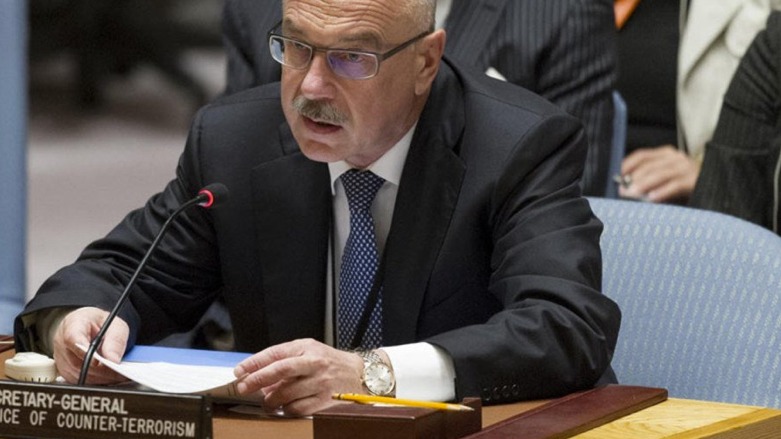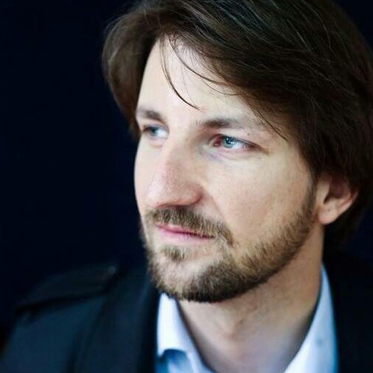Hasakah prison attack was predictable: UN counter-terrorism chief

ERBIL (Kurdistan 24) – The recent attack by ISIS on Al-Sina’a prison in the northeastern Syrian city of Al-Hasakah was predictable, the UN counter-terrorism chief told members of the UN Security Council on Thursday.
USG @UN_OCT Voronkov briefed the United Nations Security Council on recent terrorism-related developments in the northeast of the Syrian Arab Republic.
— United Nations Office of Counter-Terrorism (@UN_OCT) January 28, 2022
👉 Check remarks: https://t.co/lOx5gw5AJp
📺 Watch @UNWebTVhttps://t.co/GnvARH1Jjp https://t.co/JlTsDY6oOr pic.twitter.com/YOsh4JR9rc
ISIS launched an attack on the detention facility, which holds an estimated 3,000 to 3,500 suspected terrorists, with an explosive-laden car on Jan. 20. Moreover, they used 700 children as human shields, many of whom were previously used by the militants as child soldiers.
The SDF announced on Wednesday that it had retaken full control of the prison. However, they later uncovered an estimated 60-90 terrorists in the prison’s northern dormitories.
Read More: SDF uncovers 60-90 terrorists in Hasakah's al-Sina'a prison
The UN official said the fighting affected civilians and that an unknown number of ISIS prisoners escaped.
“This incident was predictable; ISIL/Da’esh (ISIS) has been highlighting and calling for jail breaks,” the UN Undersecretary-General Vladimir Voronkov said, citing warnings from the ISIS and Al-Qaida Sanctions Monitoring Team of the precarious holding arrangements in the northeast.
Voronkov underlined the urgent need for concerted international efforts to address — in an effective, sustainable fashion — the issue of prisons and camps in northeast Syria that hold suspected ISIS fighters and individuals with perceived links to the group, including children.
Most of these individuals have never been charged with a crime, yet remain in prolonged detention, uncertain of their fate, he explained.
The attack is also a reminder of why ISIS continues to embed itself in Syria.
“Challenges to stabilization in Iraq, as well as the continued conflict and elusive progress on the political track in Syria, make this a favoured arena for ISIL/Da’esh and other terrorist groups,” Voronkov said.
He added that only hours after the attack in Al-Hasakah, ISIS fighters attacked an army barracks located north of Baghdad, killing at least 11 soldiers.
Read More: UN Security Council condemns ISIS attack in Diyala that killed 11
He also said the recent attacks are not isolated incidents, citing the UN Secretary-General’s reports that have warned that the threat posed by ISIS is growing in Syria and Africa since its territorial collapse and subsequent reconstitution through clandestine cells. The majority of ISIS members are based in Iraq.
Voronkov also recalled his 2020 warnings to the UN Security Council of the urgency of taking the children in these camps out of harm’s way. He said some of these children may be among those ISIS used as human shields, which would not have happened had they been repatriated in 2019, 2020, or 2021.
According to the coalition, the SDF continues to hold approximately 10,000 ISIS detainees, including approximately 8,000 Iraqis and Syrians, and about 2,000 from other countries.
Moreover, there are tens of thousands of women and children still in displacement camps, such as in al-Hol and Roj camps in Syria’s Hasakah province, including citizens from more than 60 countries.
Several countries have been reluctant to repatriate their citizens due to security risks and domestic opposition.
The SDF in a statement on Wednesday called on the “United Nations to earnestly and effectively urge countries who have ISIS-associates nationals detained in the north and eastern Syria to accelerate the pace of their repatriation, primarily children and women.”
“We also call on the UNICEF and humanitarian organizations to provide, through a clear action plan, sustainable support to the Autonomous Administration to construct rehabilitation centers that meet humanitarian and international standards, away from the detention environment,” it added.
